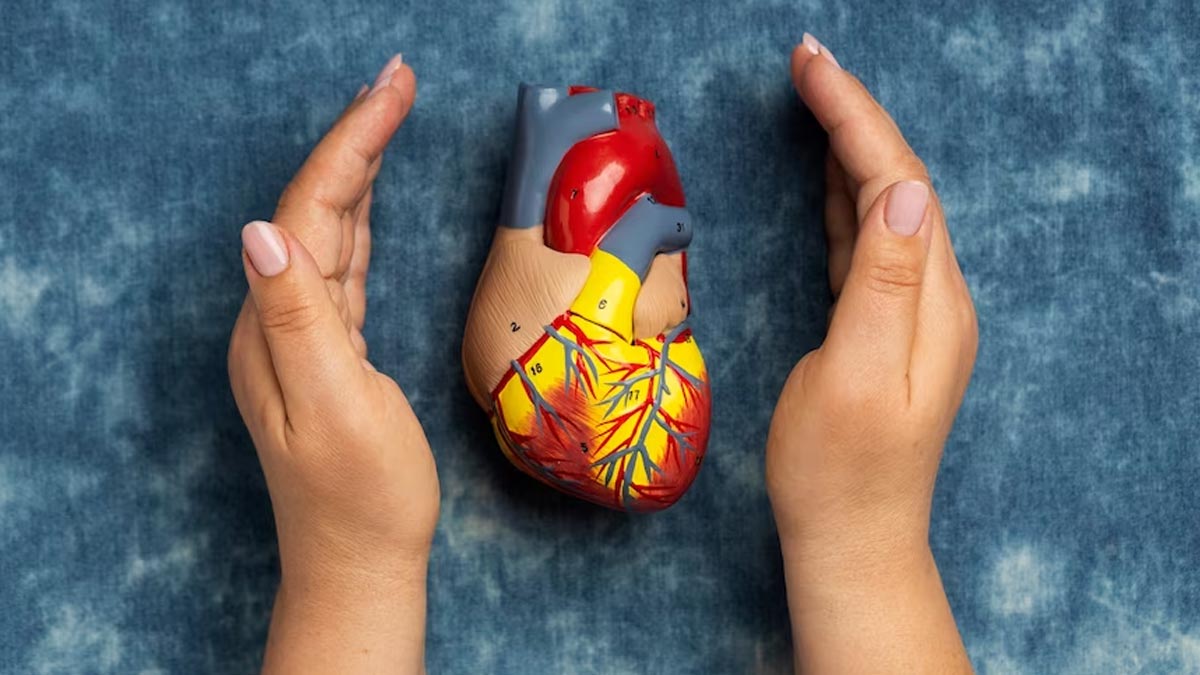
You’ve most likely heard of cholesterol, which is a type of lipid that helps build cells and certain hormones. But are you aware of triglycerides, another type of lipid that stores unused calories and provides your body with energy? High levels of both these fats can be harmful for your heart health. Since cholesterol is a much explored subject, in this article, we will focus on understanding triglycerides and its impact on the heart. Speaking with the OnlyMyHealth team, Dr Saritha Sekhar, Associate Professor and Consultant Interventional Cardiologist, Amrita Hospital, Kochi, shares some helpful ways to lower triglyceride levels.
Table of Content:-
Also Read: High Blood Pressure In Pregnant Women: Warning Signs To Note
High Triglycerides And The Risk Of Heart Disease

“Triglycerides are a specific type of fat present in the bloodstream,” explained Dr Sekhar, adding that any excess calories that your body does not immediately utilise is converted into triglycerides and stored within your fat cells for future energy needs.
While triglycerides are important for the body, high blood triglycerides can contribute to the development of arterial hardening and thickening of the artery walls (arteriosclerosis), thereby increasing the risk of heart disease, heart attack, and stroke, noted the doctor.
According to the US National Heart, Lung, and Blood Institute (NHLBI), high blood triglycerides are a type of lipid disorder, which can develop on its own, with other lipid disorders like high blood cholesterol or low HDL cholesterol, or as part of metabolic syndrome. High blood triglyceride levels are very common and up to one in four adults are affected, as per the NHLBI. Certain health conditions, medicines, genes, and lifestyle habits can make one prone to high blood triglycerides.
How To Assess Triglyceride Levels?

Just like cholesterol, triglyceride levels can be assessed during a cholesterol test, also known as a lipid profile. Dr Sekhar said, “Triglyceride levels should always be checked in a fasting state as they can rise if blood sugar levels are uncontrolled.”
Triglyceride levels are usually measured as per the following categories:
- Healthy: Below 150 milligrams per deciliter (mg/dL) for adults; lower than 90 mg/dL for children and teens (ages 10-19)
- Borderline high: Between 150 and 199 mg/dL
- High: Between 200 and 499 mg/dL
“If your triglyceride level exceeds 200 mg/dL’ your risk of experiencing a heart attack or stroke is increased. It is advisable to aim for triglyceride levels below 150 mg/dL. Ideally, keeping your triglycerides below 100 mg/dL is recommended to reduce the risk of heart disease,” the doctor highlighted.
Also Read: Is Headache A Sign Of Low Blood Pressure? Here's How You Can Tell
Steps To Manage Triglyceride Levels

Taking steps to manage and lower elevated triglyceride levels is crucial for maintaining a healthy heart. This can involve lifestyle changes, such as:
- Adopting a nutritious diet
- Engaging in regular physical activity
- Achieving and maintaining a healthy weight
- Limiting alcohol consumption
- Quitting smoking if applicable
In certain cases, your doctor may prescribe medications to help reduce triglyceride levels.
Bottomline
Similar to high cholesterol, high triglyceride levels can also impact heart health. It is a type of fat that circulates in the blood and results from foods, such as butter, oils, and other fats you consume. However, the two should not be confused with one another. While triglycerides are fats, cholesterol is not. Cholesterol is a waxy substance produced by the liver. But both can be managed through healthy lifestyle choices.
How we keep this article up to date:
We work with experts and keep a close eye on the latest in health and wellness. Whenever there is a new research or helpful information, we update our articles with accurate and useful advice.
Current Version